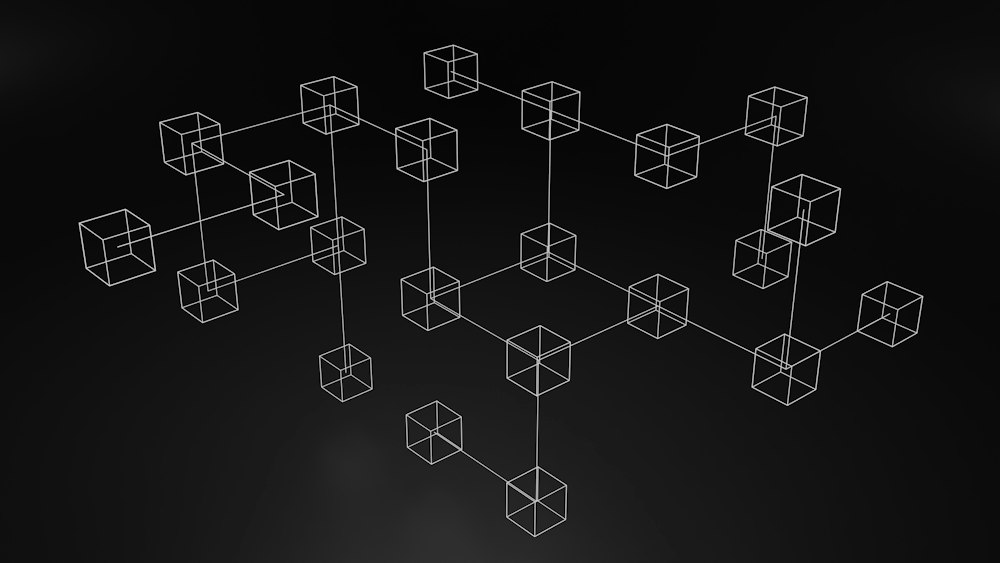Global connectivity is improving by the very minute and with more connections, come more risks. The Internet of Things (IoT) links regular devices to the Internet, creating a network of connected devices that hackers can target.
Blockchain, the technology behind cryptocurrencies like Bitcoin, has the potential to make IoT more secure, helping us protect the communication between IoT devices. This makes it tough for hackers to get into our devices or access confidential or sensitive information. Blockchain can boost the security of the whole IoT system, ensuring that interconnected devices and networks are safer than they’ve ever been.
In this article, we discuss the security challenges of the Internet of Things and explore how integrating Blockchain technology can protect IoT networks better from cyberattacks.
1. IoT and Blockchain – The Basics
Before we dive into the details of IoT security risks and the applications of blockchain, let us get a brief overview of the two technologies at hand – IoT and Blockchain.
1.1 What is IoT?
The Internet of Things (IoT) is a big network of physical things (such as gadgets and machines) that have sensors, special software, and a way to connect to the Internet. This setup allows these objects to collect and share data.
In simple words, IoT is about connecting smart gadgets (smartwatches, health trackers), home appliances (security systems, smart cameras), or large machines (air/water quality monitors, missile systems), to the Internet where they can communicate with each other. This creates a smooth network where information can flow easily.
This network of connected devices can change the way we live and work. It can automate everyday tasks, make things work better, and give us useful information about our surroundings. In recent times, the Internet of Things has grown significantly in its capabilities and usage, leading to more industries opting for IoT development; and this trend is set to get even bigger.
However, all of this added convenience also introduces several security risks such as malware and hacking, weak networks, and unencrypted data. This is exactly where the implementation of blockchain technology can offer massive improvements.
1.2 Understanding Blockchain Technology
Blockchain technology involves maintaining an unalterable ledger of transactions and digital assets in a distributed manner. These assets can be physical, like real estate, or non-physical, such as patents, copyrights, or cryptocurrencies.
Basically, each transaction is digitally recorded in a ‘block,’ and these blocks are linked sequentially, forming a ‘chain’—hence the name ‘blockchain.’ In a system based on blockchain, it’s impossible to change the contents of a block without the approval of all users in the network.
The integration of blockchain in IoT networks and their development can transform the industry, introducing increased levels of security, transparency, and interoperability. It addresses critical IoT challenges by bringing about secure automation through smart contracts and decentralized systems.
Today, investing in blockchain development services is a growing trend, not only among large enterprises but also small and local businesses from all sectors that use IoT devices. Let’s explore some of the most pressing security concerns faced by IoT networks and how blockchain technology can address them.
2. Security Challenges of IoT
IoT gadgets and networks can be attacked by cybercriminals if they lack proper built-in security features. These devices are often not very powerful and have limited computing abilities, making them open to threats that can easily take control of them and launch attacks on important systems.
To understand how blockchain technology can help solve the security problems of IoT, we first need to know about the risks and weaknesses in IoT and how they can be dealt with.
2.1 IoT Malware and Hacking
Cybercriminals are constantly on the hunt for known weaknesses in IoT devices, converting them into “zombie” botnets. An apt example here is the Mirai botnet attack in 2016, which utilized thousands of compromised household IoT devices to execute a severe Distributed Denial of Service (DDoS) campaign against prominent websites and services.
2.2 Weak Passwords
A significant security challenge in the industry arises from the use of simple, default, and hard-coded passwords in IoT devices. These types of passwords are easily deciphered by attackers, enabling unauthorized access to the device. This makes it easier for them to deploy botnets and malware. Managing passwords in a decentralized IoT environment is challenging for IoT development companies, particularly when devices are administered remotely – hence the shift towards blockchain.
2.3 Insecure Networks
Hackers exploit weaknesses in communication protocols and services to target IoT devices and acquire sensitive information. An example is the Man-in-the-Middle (MITM) attack, which aims to capture authentication credentials for subsequent attacks. Securing IoT communications is crucial, and the latest security practices need to be followed to that extent.
2.4 No Standard Rules for IoT
Yet another major worry is the fact that there are no fixed rules for making sure IoT devices are secure. Since there are lots of different devices from various makers, it takes time to ensure each one is properly secure.
This makes it tricky to put in safety measures and gives hackers chances to capitalize on weaknesses. It is also a headache for security experts who might not know the specific rules and technologies used by different devices, making it tough to find and curb potential risks.
3. Integrating Blockchain Technology with IoT
The Internet of Things and blockchain technology can work as a combination, significantly enhancing the security of IoT networks. This integration of blockchain in IoT development offers an effective solution where the strengths of each technology are leveraged to improve the overall system. The primary goal is to tackle IoT security challenges by establishing a network that focuses on user privacy and security.
Picture having absolute control over the data collected by your IoT devices, regulating its use based on your preferences, and prioritizing your privacy at all times. Thanks to blockchain’s tamper-proof and unalterable nature, its distributed model eliminates the need for a central authority. This boosts efficiency, security, and data integrity, empowering owners and users of IoT devices with increased control and privacy.
Blockchain is implemented to secure IoT in the following ways:
- Using blockchain to ensure secure communication between IoT devices.
- Deploying smart contracts to automate the management of devices.
- Utilizing blockchain to protect data collected and generated by IoT devices.
4. Advantages of Blockchain in IoT Security
Blockchain tech can make the Internet of Things safer by ensuring more robust data privacy. As blockchain is a decentralized ledger, it becomes more difficult for hackers to focus on a single weak spot. It helps guarantee the data is real and makes it harder for cybercriminals to mess with or trick the system.
Most businesses and organizations are seeking the help of blockchain development services to utilize this modern game-changer in protecting IoT systems and their sensitive information.
Let us take a closer look at the different ways we can use blockchain technology to make sure IoT devices and networks stay secure.
4.1 The Decentralized Nature of Blockchain
Blockchain technology offers several ways to enhance the security of Internet of Things (IoT) systems. The most prominent benefit lies in establishing a decentralized system for device authentication and communication. In this setup, each IoT device connects to the blockchain network, receiving a unique digital identity verified through digital signatures and smart contracts. This eliminates the dependence on a central authority, ensuring secure communication among devices within an IoT network.
Another application of blockchain is creating tamper-proof records of sensor data from IoT devices. By recording data on the blockchain in a decentralized manner, it becomes nearly impossible to alter or tamper with. This feature is especially valuable in applications like supply chain tracking, where the integrity of sensor data is absolutely crucial.
4.2 Immutable Ledger for Device Interactions
Blockchain establishes an immutable record of all device interactions and communications. This record serves to detect and prevent unauthorized access or alteration of IoT devices. With every interaction recorded on an unchangeable ledger, it becomes considerably more challenging for hackers and cybercriminals to compromise the security of IoT systems.
4.3 Smart Contracts for Device Control
Smart contracts, or self-activating contracts, represent another implementation of blockchain in governing IoT devices and data access. These contracts can be programmed to permit only authorized access to devices and data, restricting the actions authorized users can take. This ensures that sensitive information and IoT devices are controlled only by authorized parties, promptly detecting and preventing any unauthorized access.
4.4 Cryptographic Security for Communication
Blockchain technology ensures secure communication between IoT devices through public-key cryptography. This facilitates the safe exchange of information between devices without requiring intermediaries. Each device is assigned a unique pair of public and private keys for encrypting and decrypting messages.
Authentication of devices is achieved through digital signatures, verifying the identity of a device, and confirming that it is neither counterfeit nor maliciously modified. This measure effectively prevents unlawful access or control of IoT devices.
5. Use Cases of Blockchain in IoT
The incorporation of Blockchain in IoT, often termed BIoT, presents practical applications in various real-world domains across a wide range of industries. Let us explore some of its use cases.
5.1 Supply Chain Management
One of the most effective applications of the combination of IoT and blockchain lies in supply chain management. Through the integration of IoT devices like sensors and RFID (radio-frequency identification) tags with a blockchain network, businesses can establish a decentralized and secure system for tracking products throughout the supply chain.
Each step in this process can be permanently recorded on the blockchain, creating an unchangeable history of the product’s journey from manufacturer to consumer. This approach fosters transparency and accountability within the supply chain, allowing swift tracing of the origin and cause of any issues.
In addition, by employing digital signatures and smart contracts, all stakeholders can verify the authenticity of each step in the supply chain, safeguarding it against counterfeit or tampered products.
5.2 Smart Cities
The integration of IoT and blockchain technology offers valuable improvements to smart city infrastructure. IoT devices collect data on city operations, and blockchain securely stores and processes this information, enabling cities to make informed decisions that enhance residents’ efficiency and quality of life.
For instance, gathering and analyzing data on traffic patterns and public transportation usage can declutter traffic flow and transportation routes. Moreover, blockchain-based systems can establish secure, transparent mechanisms for voting and community engagement. Overall, this combination can significantly heighten the functionality and livability of smart cities.
5.3 Healthcare
The fusion of IoT and blockchain technology stands to introduce rapid innovations in the healthcare industry. By securely monitoring and sharing medical data, patients can receive improved care, and healthcare services can become more efficient. A relevant example lies in wearable medical devices that collect data and transmit it to a blockchain network. This enables real-time monitoring of a patient’s health, facilitating early detection and treatment of potential issues while maintaining the security of patients’ medical records.
Before We Close
To round our discussion up, while the growing IoT market is faced with serious concerns regarding data privacy and security, blockchain is offering new directions to tackle them. The integration of blockchain and the Internet of Things marks a pivotal moment in this evolving digital landscape.
It not only introduces new levels of transparency, security, and interoperability but also empowers businesses and consumers with its decentralized nature and automated smart contracts. As organizations from all sectors embrace the use of IoT devices and networks, it is vital to use robust technologies like blockchain to safeguard valuable and sensitive information.
If you are looking to upscale your business with the latest tech such as blockchain and IoT, connect with us at Webgen Technologies. As a trusted blockchain development company with hundreds of successful projects under our belt, we specialize in results-driven solutions that outperform your peers.
Views: 1113






